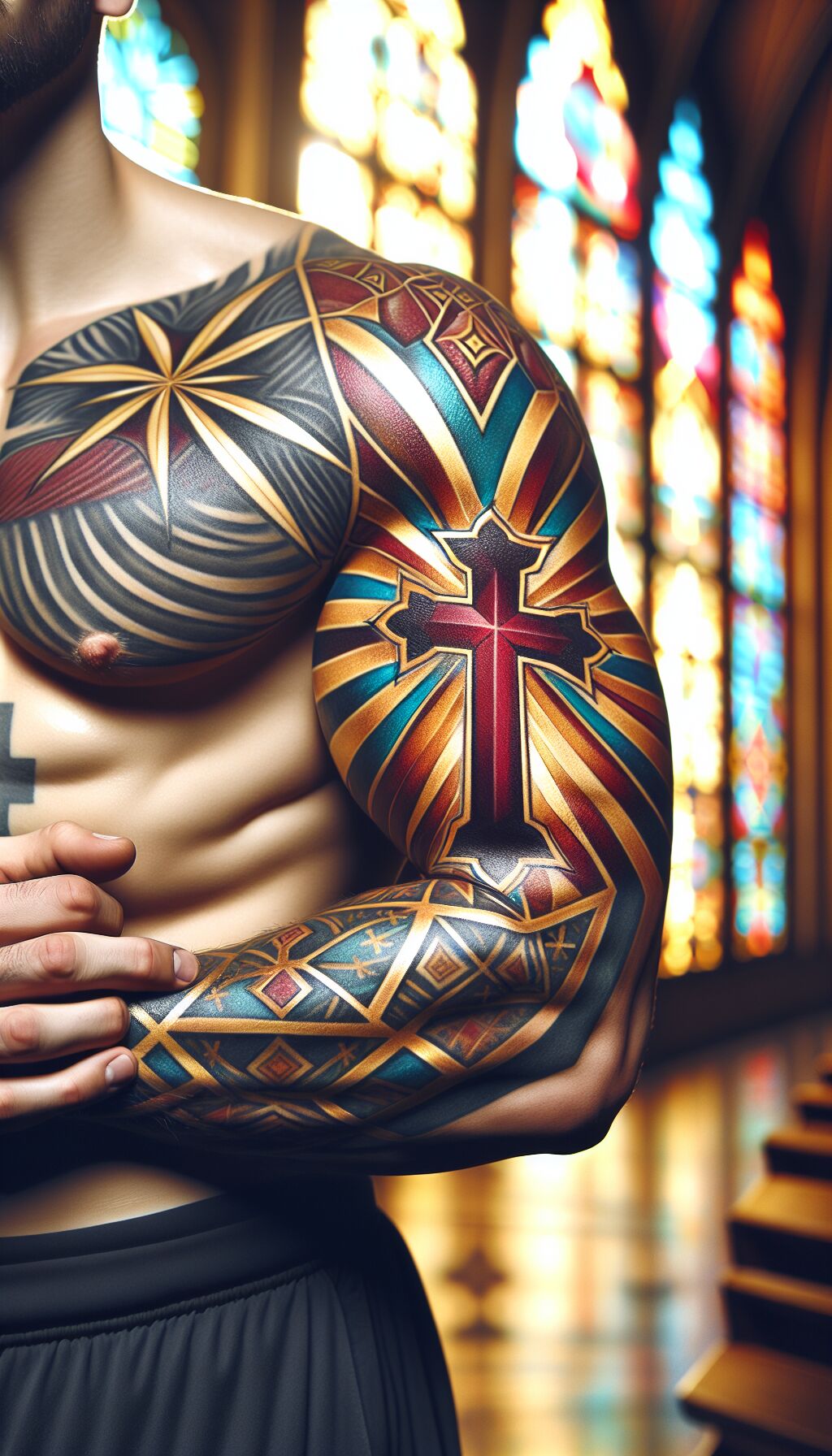Controversy Surrounding Pete Hegseth’s Tattoos: A Symbol of Faith or Extremism?
President-elect Donald Trump’s nomination of Pete Hegseth as the next leader of the Department of Defense has sparked intense scrutiny, particularly regarding his tattoos which some claim may represent symbols of White supremacy and Christian nationalism.
Background on Pete Hegseth
At 44 years old, Pete Hegseth is not only a former Fox News host but also a retired Army major. His military career includes service in the infantry as well as deployments to Iraq, Afghanistan, and Guantánamo Bay, Cuba. Like many military personnel, Hegseth bears an array of tattoos that reflect his Christian faith and patriotism.
The Notorious Jerusalem Cross Tattoo
Among Hegseth’s tattoos, one particular symbol has attracted attention: the “Jerusalem Cross.” This design features a large central cross surrounded by four smaller crosses. Hegseth, an evangelical Christian, has defended the tattoo as a representation of his faith. However, critics argue that the Jerusalem Cross has become a point of controversy, associating it with extremism, White supremacist sentiments, and even mistakenly comparing it to the Nazi swastika.
Impact on Military Career
Hegseth has spoken candidly about the backlash over his tattoo. He revealed that his leadership within the District of Columbia National Guard made the decision to pull him from a mission guarding the inauguration of President Biden. This incident, compounded by ongoing scrutiny, ultimately influenced his decision to retire from military service.
Understanding the Jerusalem Cross
Father David Grenier, a Catholic priest and member of the Holy Land Franciscan Friars who also uses the Jerusalem Cross as a symbol, explains that the tattoo has historical roots in Eastern Christianity, dating back to the fifth and sixth centuries. It was later adopted by crusaders during the Christian Kingdom of Jerusalem, which lasted from 1099 to 1291. According to Grenier, the Jerusalem Cross symbolizes the five wounds of Christ’s crucifixion and signifies the spread of the gospel throughout the world.
A Symbol of Salvation?
Father Grenier emphasized that he does not associate the Jerusalem Cross with extremist ideologies. He notes that for many Christian pilgrims who visit Jerusalem, tattooing this symbol serves as a personal reminder of their spiritual journey. This sentiment is echoed by Father Mike Schmitz, a prominent Catholic priest and podcaster, who shares that his own Jerusalem Cross tattoo is a testament to his faith, symbolizing the eternal presence of Jesus in his life.
Disputing Comparisons with Extremism
Another voice in the conversation is Jennifer Greenberg, an evangelical author, who expressed disgust over the association of the Jerusalem Cross with Nazism and white supremacy. Describing the symbol as “beautiful” and part of a rich Christian heritage, she asserts that it is widely accepted in evangelical circles. Greenberg notes that Hegseth’s other tattoos, such as “Deus Vult” and “Join or Die,” are emblematic of Christian faith and patriotic sentiments rather than extremism.
The Historical Context of Hegseth’s Tattoos
The “Join or Die” tattoo has its origins as a political cartoon by Benjamin Franklin from 1754, meant to unify the American colonies against common threats. As for the tattoo that reads “Deus Vult” (Latin for “God wills it”), it historically served as a battle cry during the Crusades. Greenberg clarifies that while it has a militaristic history, it also conveys a profound theological message of surrendering to God’s will, a notion that resonates deeply with veterans like Hegseth.
Conclusion: Faith versus Extremism
The discussion surrounding Pete Hegseth’s tattoos has opened a larger conversation about symbols, faith, and the perception of extremism in modern culture. While Hegseth maintains that his tattoos represent heritage, faith, and a soldier’s journey, critics view them through a lens clouded by contemporary fears of nationalism and radical beliefs. As the country braces for potential changes in defense policy under Hegseth’s leadership, the interpretations of these symbols will likely continue to provoke debate among military and civilian communities alike.
In the end, the symbolism embedded in Hegseth’s tattoos serves to illustrate the complexity of identity, faith, and the potential for misunderstanding in a society grappling with the implications of its historical narratives.
